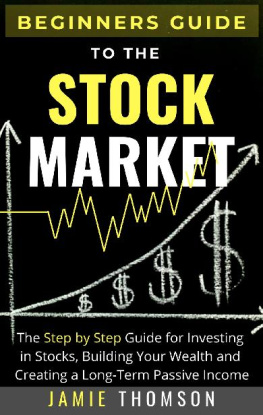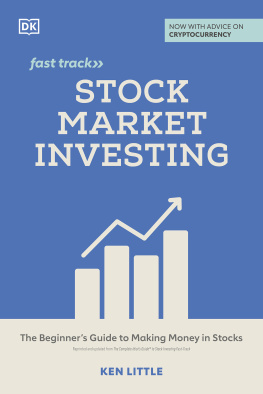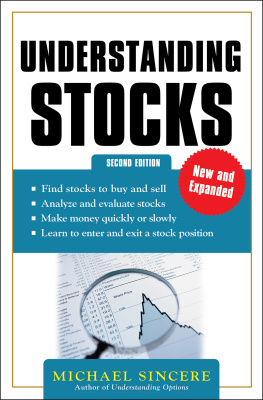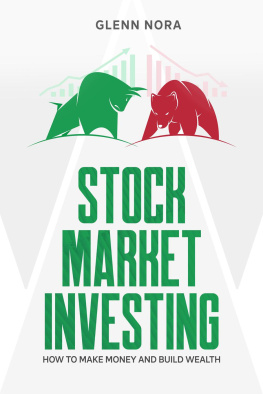Contents
Guide
Where the Money Is
Value Investing in the Digital Age
Adam Seessel
A VID R EADER P RESS
An Imprint of Simon & Schuster, Inc.
1230 Avenue of the Americas
New York, NY 10020
www.SimonandSchuster.com
Copyright 2022 by Adam Seessel
All rights reserved, including the right to reproduce this book or portions thereof in any form whatsoever. For information, address Avid Reader Press Subsidiary Rights Department, 1230 Avenue of the Americas, New York, NY 10020.
First Avid Reader Press hardcover edition May 2022
AVID READER PRESS and colophon are trademarks of Simon & Schuster, Inc.
For information about special discounts for bulk purchases, please contact Simon & Schuster Special Sales at 1-866-506-1949 or .
The Simon & Schuster Speakers Bureau can bring authors to your live event. For more information or to book an event, contact the Simon & Schuster Speakers Bureau at 1-866-248-3049 or visit our website at www.simonspeakers.com.
Interior design by Paul Dippolito
Jacket design by Alison Forner
Jacket illustration by Ben Wiseman
Author photograph Sadie Bridger
Library of Congress Cataloging-in-Publication Data has been applied for.
ISBN 978-1-9821-8514-5
ISBN 978-1-9821-8516-9 (ebook)
To my parents,
Tom and Diane,
Who taught me to love good writing
And appreciate rigorous inquiry
As a newcomeruninfluenced by the distorting traditions of the old regimeI could respond readily to the new forces that were beginning to enter the financial scene. I learned to distinguish between what was important and unimportant, dependable and undependable, even what was honest and dishonest, with a clearer eye and better judgment than many of my seniors, whose intelligence had been corrupted by their experience.
Ben Graham, The Memoirs of the Dean of Wall Street
The key to investing is not assessing how much an industry is going to affect society, or how much it will grow, but rather determining the competitive advantage of any given company and, above all, the durability of that advantage.
Warren Buffett, Fortune, 1999
Disclaimers
Certain pricing data and information referenced herein has been provided by ICE Data. ICE Data cannot guarantee the accuracy or completeness of such data and information and accepts no liability in connection with its use.
Nothing in this document should be construed as investment advice or a recommendation to buy or sell any investment products or to make any type of investment. This book shall not constitute an offer to sell or the solicitation of any offer to buy any securities, which may only be made at the time a qualified offeree receives a confidential private offering memorandum or other authorized documentation describing the offering. Information relating to any fund as set forth herein is subject to change.
Any and all information provided herein may be modified or supplemented in subsequent editions of this book.
The investment themes reflected within this book are included merely to illustrate the types of investments that the author may make on behalf of the funds or clients he manages. There is no guarantee that any fund or client will or will not invest in such securities in the future. It should not be assumed that any investment theme or idea discussed herein has been or will be profitable, or that recommendations made in the future will be profitable or will equal the investment performance of the investment themes or ideas discussed herein.
Any performance information, projections, market forecasts, and estimates in this book are forward looking statements and are based upon certain assumptions. Any projections, forecasts, and assumptions should not be construed to be indicative of the actual events which will occur or have occurred. Past performance is not necessarily indicative of future results. While all the information prepared in this book is believed to be accurate, the author makes no express or implied warranty as to the completeness or accuracy of, nor can he accept responsibility for errors appearing in, this book.
A Note on Terminology
This book contains a fair number of business, financial, and accounting terms. Its a book about investing, after all. However, readers unfamiliar with them should not feel intimidated. Like most engaged in well-paid professions, money managers employ esoteric language to make their job appear more difficult than it is. Such smoke screens, advisors hope, help justify their fees.
As Peter Lynch suggested in his books a generation ago, I believe that investing is too important to be left to the experts. Like Lynch, I also believe that anyone with intelligence, common sense, and their own everyday experience can become a good investor. Indeed, because they are less exposed to short-term pressure, amateurs are often better placed to exploit market opportunities. While the pros fret about their next quarters performance, amateurs can keep their eyes on the long term, where the real money is made.
That said, accounting is the language of business, and whether youre traveling to a foreign country or the land of commerce, it helps to know the lingo. Here again, dont be afraid. The accounting that investors need to understand is neither mysterious nor terribly complex. At its essence, accounting is just that: it accounts for what a company owns and what it owes, and it helps companies keep track of the money thats coming in and the money thats going out. Accounting is simply a set of rules that businesspeople use to help them keep score, so to speak. As youll see later in the book, these rules change as economic reality changes. One could argue that, given the rise of the Digital Age, the current system is due for many such alterations.
In the chapters that follow, I do my best to explain in simple terms financial and accounting concepts that might not be intuitive to all. However, if you get stuck, theres a glossary at the end of the book that attempts to define every business and financial term I use. If after consulting the glossary youre still confused, go to Investopedia.com, an excellent, plain-English website thats free to use. If you want to dig even deeper, I recommend a book called Understanding Wall Street by Jeffrey B. Little and Lucien Rhodes. Its a short primer that was one of the first books I read when I left journalism and entered finance, and it helped me a lot.
Introduction: So Big, So Fast
I have a friend from college, Alex, whose wealth accumulation strategy over the last fifteen years has been to own a single stock: Apple. Alex bought Apple in 2007, when the company introduced the iPhone, based on the following logic:
- I just got an iPhone, and its such a revolutionary product that a lot more people are going to get one, toonow and for many years to come.
- The stock price is going to follow.
As the chart below shows, Alex ended up absurdly right. The market average, as measured by the S&P 500 index, is up roughly threefold over this period, while Apple is up roughly forty-five fold.
Apples wonderful ascent, however, obscures the fact that four times over the last fifteen years, Apples stock lost 30% of its market value. Once every three to four years, Alex saw his life savings decline by almost a third. As anyone who has ever invested in the stock market can tell you, that does not feel good.










